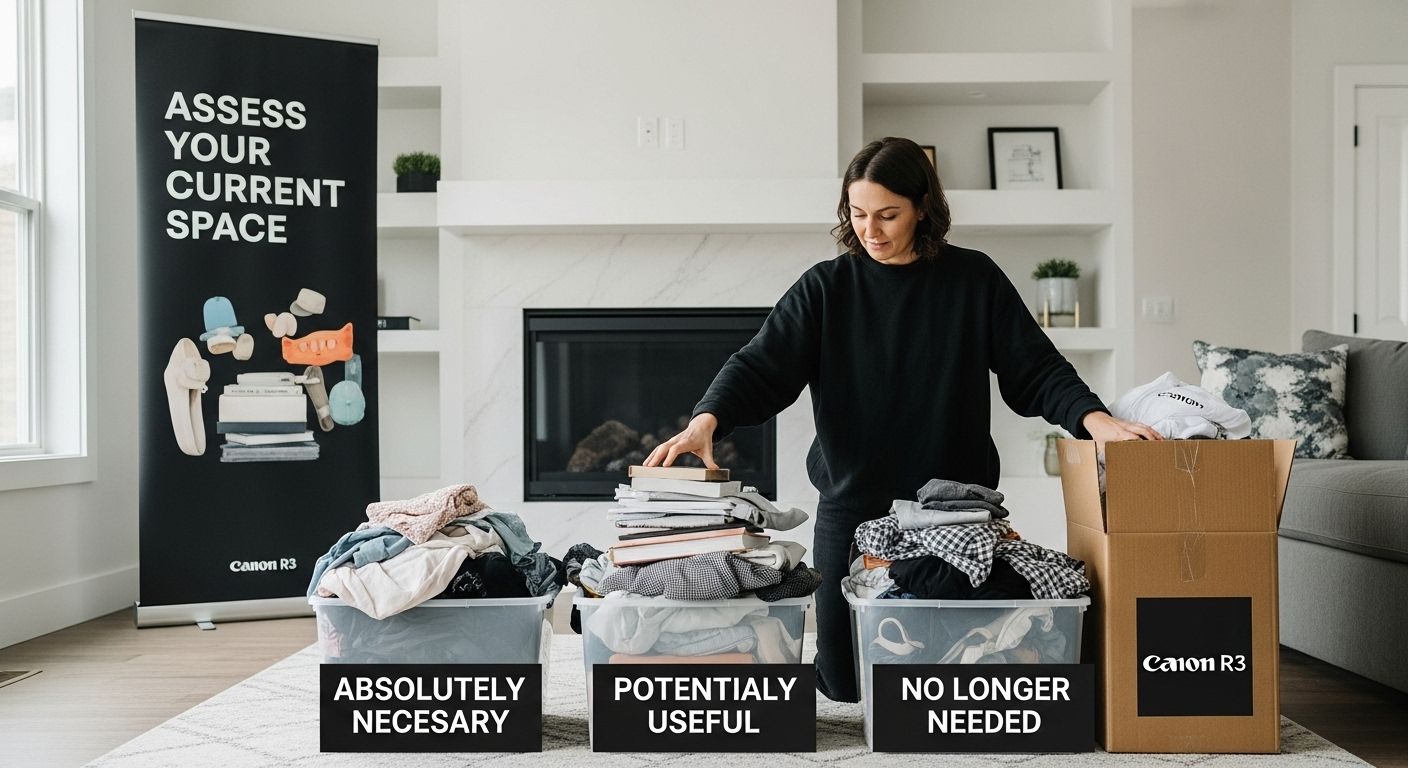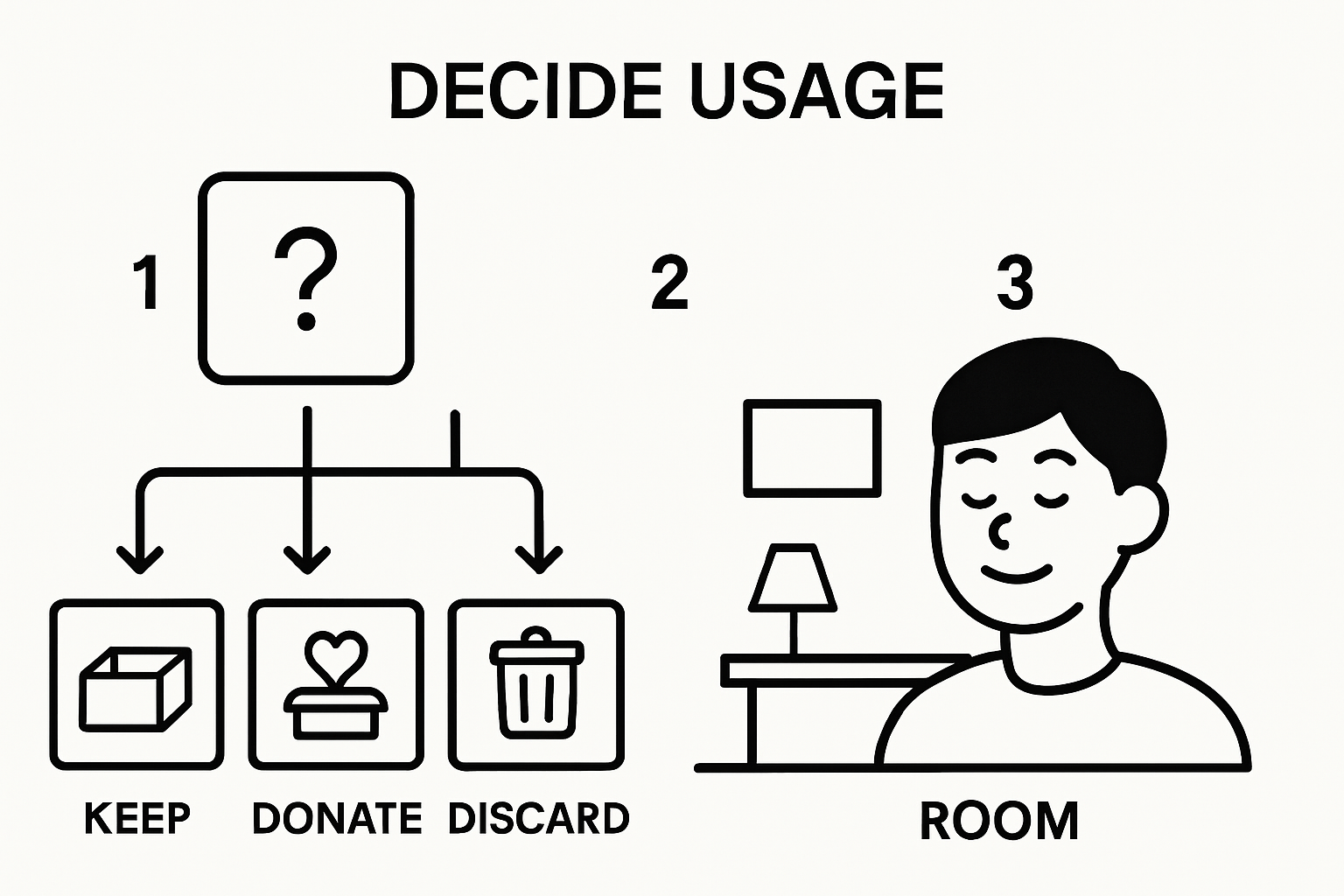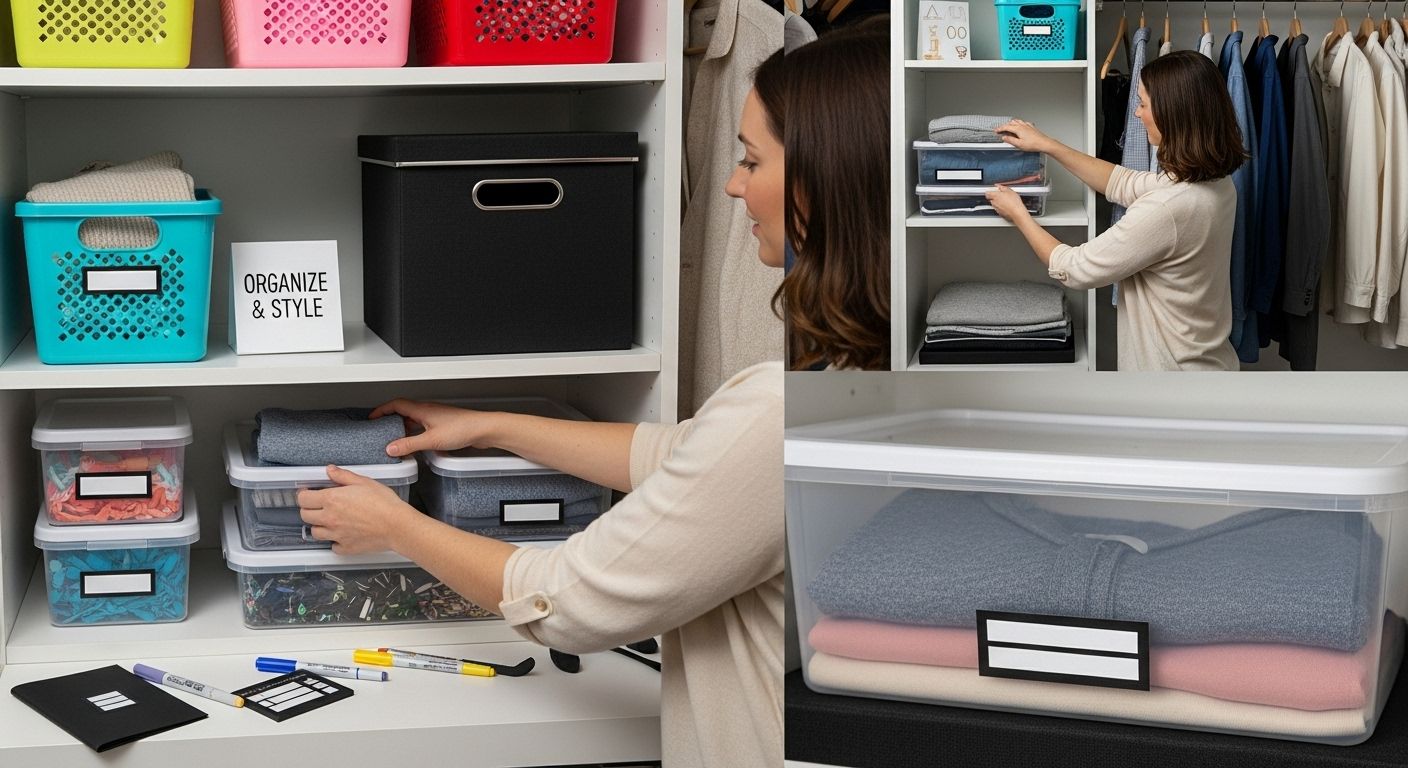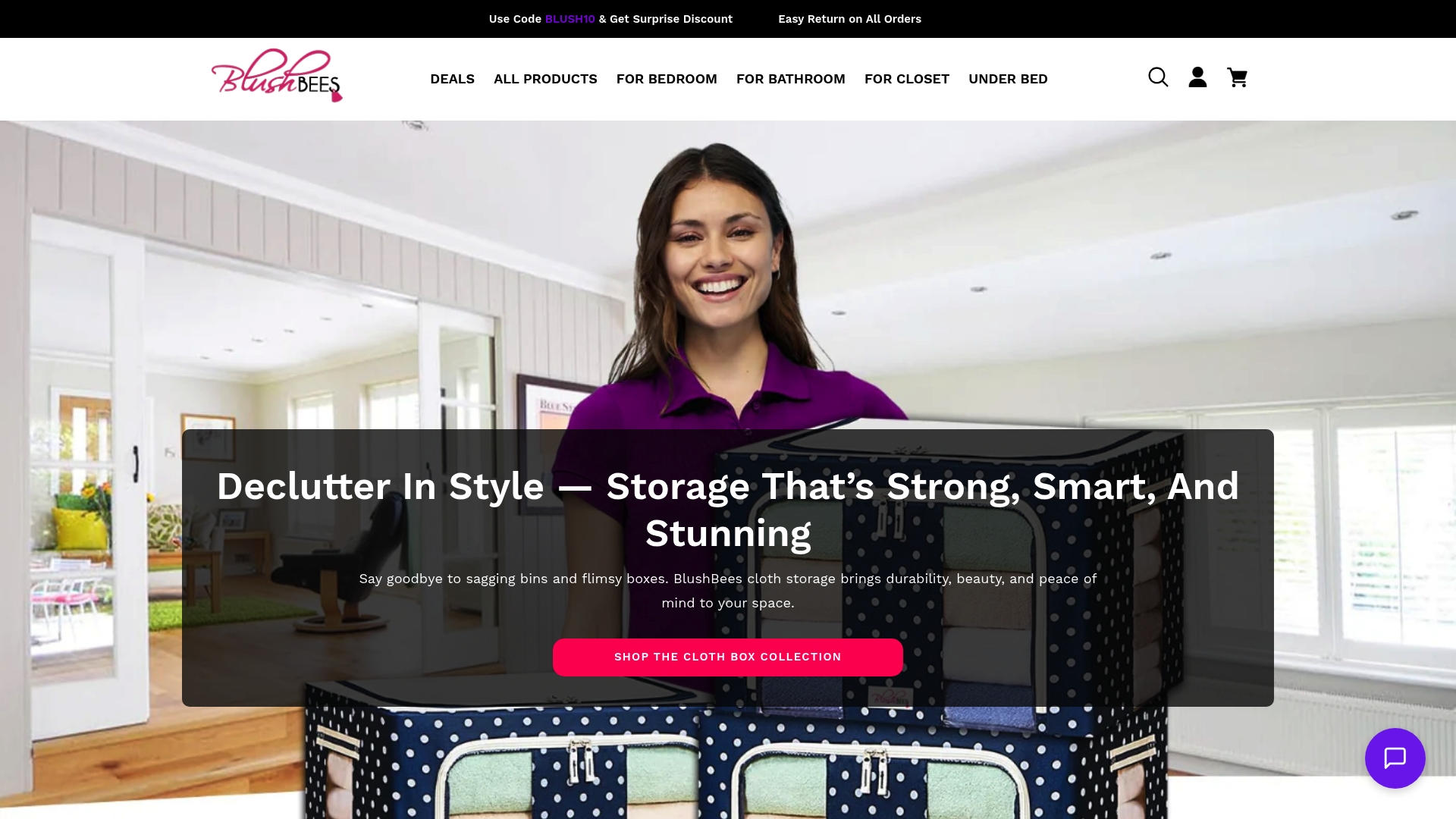

Every surface in your home seems to collect stuff faster than you can clear it, and clutter has a bigger impact than most people realize. The CDC warns that cluttered spaces sharply increase the risk of accidents at home. Most guides promise quick fixes but the real secret starts with a shift in mindset, not a shopping trip for storage bins.
Table of Contents
- Step 1: Assess Your Current Space And Identify Clutter
- Step 2: Categorize Items Into Keep, Donate, And Discard
- Step 3: Develop A Decluttering Schedule And Plan
- Step 4: Execute The Decluttering Process Room By Room
- Step 5: Organize And Style Your Remaining Items
- Step 6: Establish Maintenance Routines To Prevent Clutter
Quick Summary
| Key Point | Explanation |
|---|---|
| 1. Assess Your Space Objectively | Walk through each room with a neutral perspective and identify unnecessary items that clutter your environment. |
| 2. Categorize Items Clearly | Sort belongings into three categories: keep, donate, and discard to facilitate a decision-making process on your items. |
| 3. Develop a Consistent Schedule | Create a realistic decluttering plan with time-bound goals to maintain momentum without causing burnout. |
| 4. Use a Systematic Approach | Execute the decluttering plan room by room, ensuring you empty, clean, and return only essentials to each space. |
| 5. Establish Maintenance Routines | Implement daily and weekly habits to maintain organization and prevent clutter from returning. |
Step 1: Assess Your Current Space and Identify Clutter
Clutter doesn’t accumulate overnight, but understanding its progression helps you tackle it effectively. Your initial assessment is crucial in transforming cluttered spaces into organized sanctuaries. This step isn’t just about seeing what’s around you - it’s about recognizing patterns, emotional attachments, and systematic barriers preventing a streamlined living environment.
Begin by walking through each room with a neutral perspective. Imagine you’re viewing your space through a visitor’s eyes. What immediately stands out? Look for items that serve no current purpose: outdated electronics collecting dust, stacks of papers without clear organization, clothing with tags still attached, or decorative items that no longer spark joy. The ultimate guide to home organization recommends taking digital photographs of each space, which helps create emotional distance and allows you to analyze rooms more objectively.
As you assess, categorize items into clear mental groups: absolutely necessary, potentially useful, and no longer needed. The Centers for Disease Control and Prevention emphasizes that cluttered spaces aren’t just aesthetic problems - they’re potential safety hazards. Pathways should remain clear, with walking areas free from unexpected obstacles. Pay special attention to high-traffic zones like hallways, kitchen counters, and bedroom floors. Your goal isn’t perfection but creating functional, safe living spaces that support your daily activities and mental well-being.
Verify your assessment by asking critical questions about each item: When was the last time I used this? Does it serve a current purpose? Would I purchase this again today? If the answer is no, it might be time to let go. Remember, assessing your space is the foundational first step in your decluttering journey - an honest, compassionate evaluation that sets the stage for meaningful transformation.
Step 2: Categorize Items into Keep, Donate, and Discard
Categorizing is the critical bridge between assessment and actual decluttering. This step transforms your initial space evaluation into actionable decisions, helping you create meaningful boundaries with your belongings. Your goal is to sort items decisively and compassionately, recognizing that each object represents a choice about your living space and personal energy.
Start by gathering three distinct containers or clearly marked areas: one for items you’ll keep, another for donations, and a final space for discarding. The psychological power of physical separation cannot be understated. As you handle each item, make an immediate and firm decision. Hesitation breeds clutter. Ask yourself pointed questions: Have I used this in the last year? Does this item genuinely serve my current lifestyle? Would I buy this again today? Strategies for stylish home organization recommend creating a 12-month usage rule - if something hasn’t been touched in a year, it likely doesn’t belong in your active living space.
When determining donation potential, the U.S. Environmental Protection Agency suggests evaluating items for their potential second life. Gently used clothing, functional kitchenware, and intact furniture can find new purpose through local charities, shelters, or community centers. For discarded items, consider responsible disposal methods: electronics might require special recycling, while some materials can be repurposed or recycled. Avoid emotional attachment to objects that no longer serve you. Remember, letting go isn’t about loss - it’s about creating space for new experiences, opportunities, and growth. By the end of this categorization process, you’ll have a clear, intentional collection of belongings that truly represent your current self and aspirations.

Step 3: Develop a Decluttering Schedule and Plan
A strategic decluttering plan transforms overwhelming chaos into manageable progress. This step is about creating a realistic, sustainable approach that fits your lifestyle, energy levels, and available time. The key is breaking down your massive decluttering goal into small, achievable actions that build momentum without causing burnout.
Start by establishing time-bound, specific goals that align with your daily routine. Discover practical organization strategies that emphasize consistent, short sessions over marathon cleaning events. According to occupational therapy research, dedicating just 15 minutes daily is more effective than attempting hours-long overhauls. Create a weekly schedule that designates specific days and times for decluttering. For instance, Monday might focus on the bedroom closet, Wednesday on kitchen drawers, and Saturday on paperwork and digital files.
Implement an accountability system to maintain motivation. Use a physical calendar or digital tracking app to mark completed sessions, creating a visual representation of your progress. Reward yourself after completing each scheduled session to reinforce positive habits. Consider creating an if-then plan: if it’s Monday at 7 PM, then I’ll spend 15 minutes organizing my closet. This approach transforms decluttering from an intimidating task into a structured, predictable routine.
Your plan should remain flexible yet consistent, allowing for life’s unexpected interruptions while maintaining overall momentum. By the end of this step, you’ll have a clear, personalized roadmap that breaks down your decluttering journey into manageable, less overwhelming segments - turning what once seemed impossible into an achievable, step-by-step process.
Step 4: Execute the Decluttering Process Room by Room
Executing your decluttering plan requires strategic focus and systematic approach. This step transforms your previous preparation into tangible action, converting overwhelming chaos into organized spaces through methodical room-by-room progression. The goal is creating intentional, functional environments that support your lifestyle and reduce mental stress.
Expert home organization strategies recommend starting with the easiest spaces to build momentum. Begin with rooms that feel least emotionally charged - typically utility areas like laundry rooms or hallway closets. According to CDC safety recommendations, prioritize creating clear pathways and removing potential trip hazards during your room-by-room process. Work systematically within each space: empty the entire area, clean surfaces thoroughly, then deliberately return only items you’ve already determined to keep. This approach prevents re-cluttering and forces honest decision-making about each object’s true value.
Establish a consistent workflow for each room. Start at one corner and move clockwise, handling items individually and immediately. Place items directly into your predetermined keep, donate, or discard containers. Time-box each session to prevent burnout - 30-45 minute focused intervals work best for most people. Remember that perfection isn’t the goal; progress is. Some rooms might take multiple sessions, and that’s completely acceptable. By maintaining your structured approach and staying committed to your original categorization plan, you’ll gradually transform your living spaces from cluttered to curated, creating environments that genuinely support your current lifestyle and future aspirations.
Step 5: Organize and Style Your Remaining Items
Organizing your remaining items transforms decluttering from a cleanup task into an art of intentional living. This step is about creating functional, visually pleasing spaces that reflect your personal style while maintaining practical efficiency. The goal is to design storage solutions that not only contain your belongings but also make them easily accessible and aesthetically appealing.
Explore innovative storage solutions that maximize both form and function. According to Consumer Product Safety Commission recommendations, prioritize safety by anchoring storage furniture and placing heavier items on lower shelves. Group similar items together using clear containers, labeled boxes, or color-coded systems that make retrieval intuitive. Consider vertical storage options that utilize wall space - floating shelves, hanging organizers, and multi-tier systems can dramatically increase storage capacity without cluttering floor areas. Think strategically about item placement: keep frequently used objects at eye level or in easily reached spaces, while seasonal or less-used items can be stored in higher or less accessible locations.
Create visual harmony by selecting storage solutions that complement your existing decor. Uniform containers in coordinating colors can transform chaotic spaces into streamlined, intentional environments. Use clear labels, but choose a styling approach that feels natural to your aesthetic - minimalist white labels for a clean look, or handwritten chalk markers for a more rustic feel. The final test of successful organization is not just how it looks, but how effortlessly you can maintain the system. If retrieving an item feels intuitive and returning it is simple, you’ve created an organizational approach that will genuinely support your daily life.

Step 6: Establish Maintenance Routines to Prevent Clutter
Maintenance is the critical bridge between successful decluttering and long-term organization. This step transforms your hard-earned progress into a sustainable lifestyle, creating habits that naturally prevent clutter from reaccumulating. The goal is to develop simple, consistent routines that make tidiness feel effortless and automatic.
Discover practical home organization techniques that transform maintenance into a seamless part of daily life. According to research on habit formation, building consistent routines typically requires 2-5 months of dedicated practice. Implement a daily 10-minute tidying ritual that becomes as natural as brushing your teeth. This might involve a quick sweep through main living areas before bedtime, returning items to their designated spaces, and clearing surfaces. Choose a specific time that consistently works with your schedule - perhaps right after dinner or before your evening relaxation routine.
Create accountability mechanisms that support your maintenance goals. Consider using a simple tracking method like a daily checklist or a habit-tracking app to monitor your progress. Establish a weekly reset day where you spend 30-45 minutes doing a more comprehensive organization check: returning misplaced items, wiping down surfaces, and ensuring your organizational systems remain intact. The true measure of success is not perfection, but consistent, incremental effort. Your maintenance routine should feel supportive, not punitive - a gentle reminder of the calm, organized space you’ve worked hard to create. By embedding these small, consistent actions into your daily life, you’ll transform clutter prevention from a challenging task into an intuitive, almost unconscious practice.
Take the Pain Out of Decluttering with Practical Storage Solutions
Struggling to turn your assessment and categorization efforts into a lasting clutter-free home? Many readers of our “How to Let Go of Clutter: A Simple 2025 Guide” find that the true challenge comes after sorting—when it is time to organize and style what remains. Without the right systems, even the best decluttering plans often lead to frustration and relapse. Whether you crave a tidy closet, a calm kitchen, or more peaceful bedroom spaces, the right storage options can make your results stick.

Make your hard work last and enjoy a home that looks and feels organized every day. Discover a wide choice of stylish organizers designed for real-life bedrooms in our Bedroom Storage collection and transform your kitchen with clever finds from Kitchen Storage. Looking for a special deal to motivate your fresh start? Explore our best current Deal Of The Week selections. Do not let your decluttering progress disappear—visit Blushbees now and create a space you are proud to maintain.
Frequently Asked Questions
What is the first step in the decluttering process?
The first step is to assess your current space and identify clutter. Take a neutral perspective while evaluating each room and categorize items as necessary, potentially useful, or no longer needed.
How should I categorize items during decluttering?
Categorize items into three groups: keep, donate, and discard. This separation helps make decisive choices about what to retain based on current usage, purpose, and emotional attachment.
What is an effective method for executing the decluttering process?
Execute the decluttering process room by room. Start with the least emotionally charged spaces, empty the entire area, clean, and only return items you’ve decided to keep. This prevents re-cluttering.
How can I maintain an organized space after decluttering?
Establish maintenance routines, such as a daily 10-minute tidying ritual and a weekly reset day. These habits help prevent clutter from reaccumulating and ensure that your living space stays organized.



